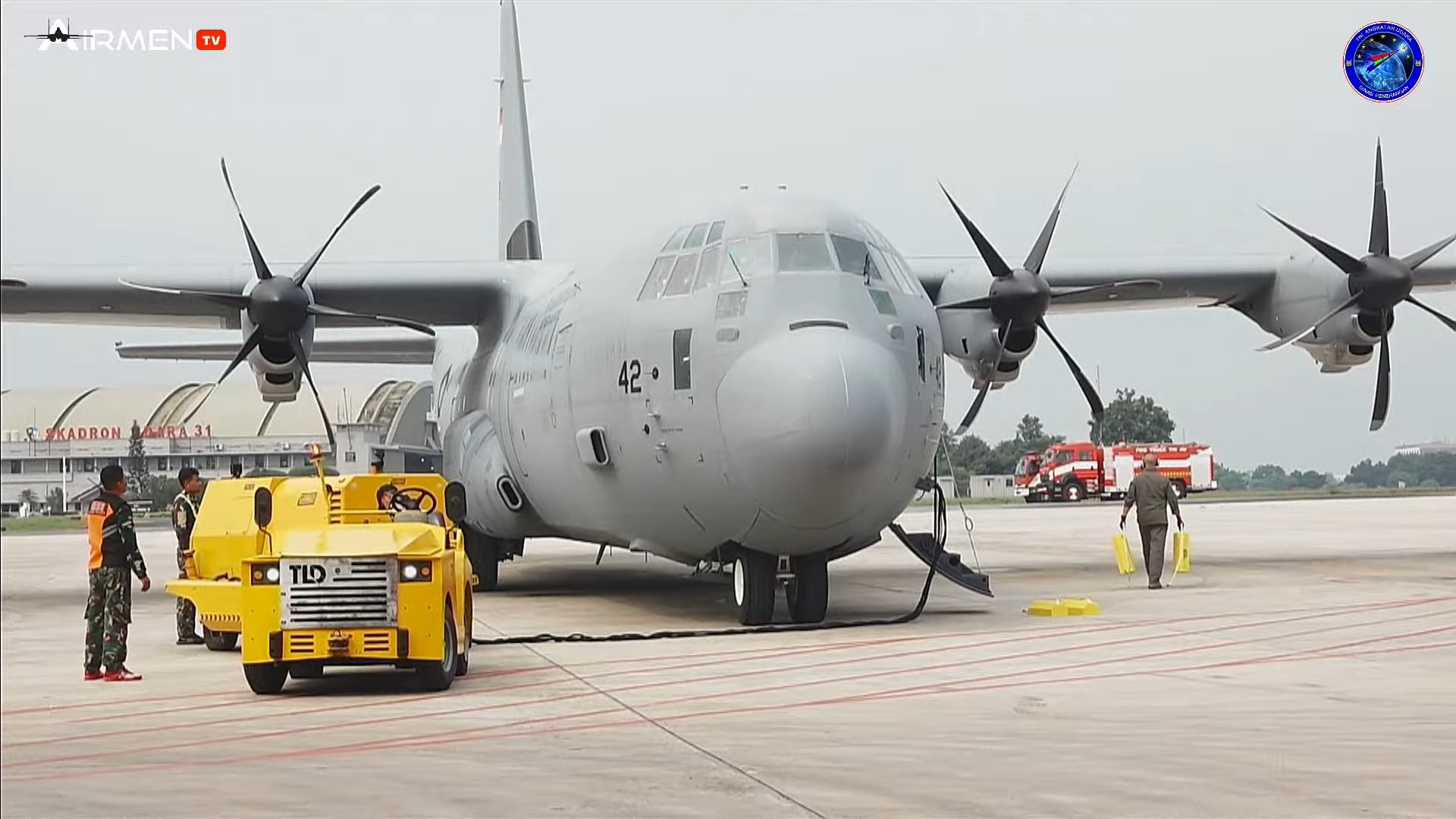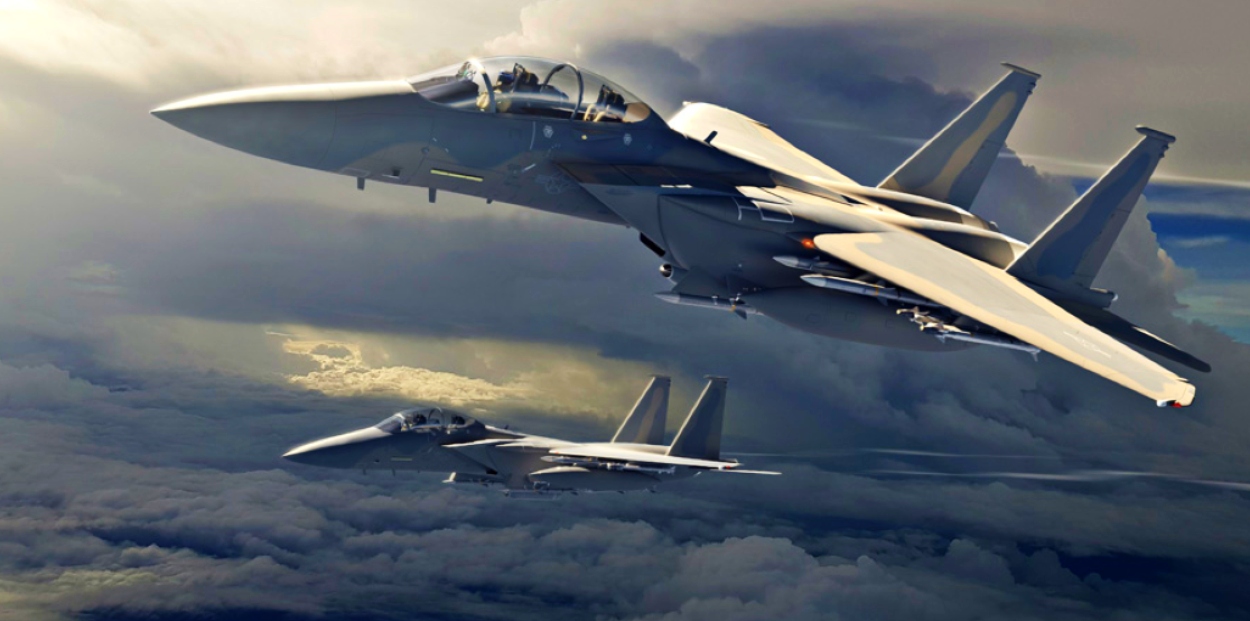As Indonesia looks to modernize its military, the Air Force (TNI-AU) has announced the arrival of its fifth and final Lockheed Martin C-130J-30 Super Hercules aircraft. The country is acquiring a diverse range of very advanced warplanes, including French Rafales, US F-15EX, Korean KF-21, and possibly even Russian Su-35.
The aircraft, bearing tail number A-1342, touched down at Halim Perdanakusuma Air Base in Jakarta on May 16, as confirmed by the Indonesian Ministry of Defense (MoD).
This completion of deliveries is closely aligned with the planned schedule, with the original delivery plan stipulating the reception of four aircraft by October 2023 and the final one by January 2024.
The MoD detailed that the first three aircraft were delivered in 2023—starting with serial number A-1339 in March, followed by A-1340 in June, and A-1343 in August. The fourth unit, A-1344, arrived in January 2024.
After departing the Lockheed Martin plant in Marietta, Georgia, the final C-130J-30 made stops in San Diego, Honolulu, the Marshall Islands, and Guam before reaching Jakarta.

All five aircraft are set to be deployed with Air Squadron 31 at Halim Perdanakusuma Air Base, bolstering a squadron that already operates a mix of older C-130 variants, including L-100-30 Hercules models acquired in the 1980s and 1990s.
The Indonesian Air Force has operated C-130 tactical transport aircraft since the 1960s and maintains a fleet that includes approximately a dozen “B” and “H” variants. These include nine refurbished C-130Hs transferred from Australia after the latter upgraded to C-130Js in 2012.
However, Indonesia’s C-130 fleet has faced challenges, including the loss of five aircraft since 2000, one of which was an ex-Australian model that crashed in December 2016. The aging fleet has also been plagued by serviceability issues, underscoring the need for modern replacements.
The arrival of the new C-130J-30 Super Hercules is a crucial enhancement for Indonesia, a nation frequently impacted by natural disasters such as earthquakes, volcanic eruptions, and flooding.
The increased cargo capacity, speed, range, power, and overall performance of the C-130J-30s are expected to significantly improve the TNI-AU’s ability to rapidly respond to emergencies and ensure access to remote areas across the vast archipelago.
With these new capabilities, the Indonesian Air Force is better positioned to perform a range of operations, from disaster relief to military logistics, reinforcing its strategic airlift capacity and ensuring readiness to support the nation’s diverse and widespread needs.
Indonesian Air Force’s Modernization Efforts
The Indonesian Air Force (TNI-AU) continues to pursue its ambitious modernization agenda despite encountering financial hurdles.
Over the past few years, Jakarta has pursued strategic partnerships and procurement deals to bolster its defense capabilities, aiming to equip its arsenal with cutting-edge aircraft technology.
One of the most significant developments in Indonesia’s modernization journey is the landmark agreement with France’s Dassault Aviation to acquire 42 Rafale fighter jets.
The deal, valued at $8.1 billion, was inked in 2022, with the final phase of acquisition formally completed earlier this year. Anticipation mounts as the first delivery of three Rafales is slated for January 2026.
In addition to the Rafale deal, last year, Indonesia inked a memorandum of understanding with Boeing for the procurement of 24 F-15EX fighter jets, designated as F-15IDN for the Indonesian Air Force.
This deal, valued at up to $13.9 billion, underscores Jakarta’s commitment to diversifying its fighter jet fleet with cutting-edge platforms.
Boeing’s F-15EX, touted as the most advanced variant of the venerable F-15, promises unparalleled performance and capabilities, including digital fly-by-wire flight controls and state-of-the-art mission systems.

However, financing and payment have emerged as key challenges, with Boeing previously raising concerns regarding Indonesia’s ability to meet the financial obligations associated with the F-15 acquisition.
While exploring options for advanced fighter aircraft, Indonesia also earlier considered the possibility of acquiring the fifth-generation F-35 fighter jet. However, the US decision not to approve the sale, citing Indonesia’s perceived lack of necessary operational capabilities, halted further progress in this direction.
Furthermore, Indonesia is actively engaged in the development of the KF-21 fighter jet in collaboration with South Korea, albeit facing financial constraints that have prompted discussions to reassess financial commitments to the project.
Similarly, the procurement of second-hand Dassault Mirage 2000-5 fighter aircraft from Qatar was abandoned due to financial difficulties.
In a recent development, the Indonesian Ambassador to Russia, Jose Tavares, revealed that the Su-35 fighter jet deal with Russia remains under consideration, pending a “more accommodating” environment likely to mitigate the risk of US-led sanctions. The country already operates Su-30 jets.
If realized, this agreement would add another dimension to Indonesia’s fighter jet capabilities, potentially positioning it as a formidable force with a diverse fleet comprising Rafales, F-15s, and Su-35s.






